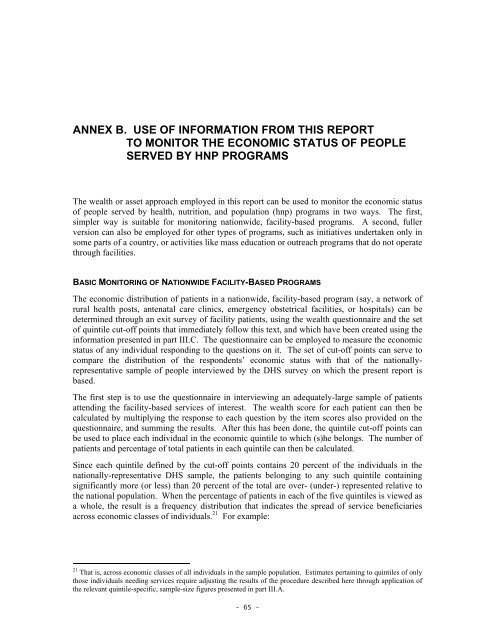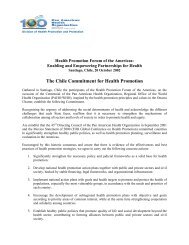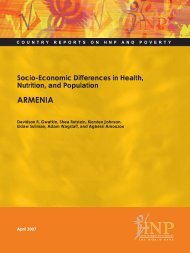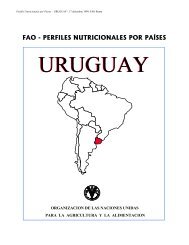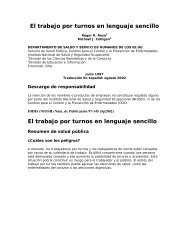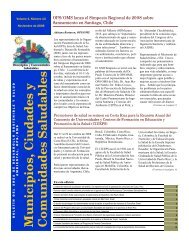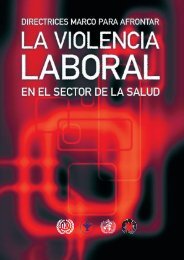Eritrea 1995. - BVSDE
Eritrea 1995. - BVSDE
Eritrea 1995. - BVSDE
- No tags were found...
You also want an ePaper? Increase the reach of your titles
YUMPU automatically turns print PDFs into web optimized ePapers that Google loves.
ANNEX B. USE OF INFORMATION FROM THIS REPORTTO MONITOR THE ECONOMIC STATUS OF PEOPLESERVED BY HNP PROGRAMSThe wealth or asset approach employed in this report can be used to monitor the economic statusof people served by health, nutrition, and population (hnp) programs in two ways. The first,simpler way is suitable for monitoring nationwide, facility-based programs. A second, fullerversion can also be employed for other types of programs, such as initiatives undertaken only insome parts of a country, or activities like mass education or outreach programs that do not operatethrough facilities.BASIC MONITORING OF NATIONWIDE FACILITY-BASED PROGRAMSThe economic distribution of patients in a nationwide, facility-based program (say, a network ofrural health posts, antenatal care clinics, emergency obstetrical facilities, or hospitals) can bedetermined through an exit survey of facility patients, using the wealth questionnaire and the setof quintile cut-off points that immediately follow this text, and which have been created using theinformation presented in part III.C. The questionnaire can be employed to measure the economicstatus of any individual responding to the questions on it. The set of cut-off points can serve tocompare the distribution of the respondents’ economic status with that of the nationallyrepresentativesample of people interviewed by the DHS survey on which the present report isbased.The first step is to use the questionnaire in interviewing an adequately-large sample of patientsattending the facility-based services of interest. The wealth score for each patient can then becalculated by multiplying the response to each question by the item scores also provided on thequestionnaire, and summing the results. After this has been done, the quintile cut-off points canbe used to place each individual in the economic quintile to which (s)he belongs. The number ofpatients and percentage of total patients in each quintile can then be calculated.Since each quintile defined by the cut-off points contains 20 percent of the individuals in thenationally-representative DHS sample, the patients belonging to any such quintile containingsignificantly more (or less) than 20 percent of the total are over- (under-) represented relative tothe national population. When the percentage of patients in each of the five quintiles is viewed asa whole, the result is a frequency distribution that indicates the spread of service beneficiariesacross economic classes of individuals. 21 For example:21 That is, across economic classes of all individuals in the sample population. Estimates pertaining to quintiles of onlythose individuals needing services require adjusting the results of the procedure described here through application ofthe relevant quintile-specific, sample-size figures presented in part III.A.- 65 -


